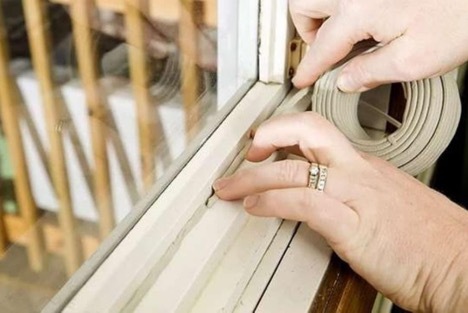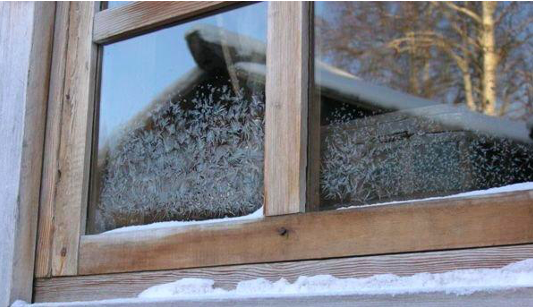Insulating old wood windows is an important step in winterizing your home. Before you begin the process, you need to conduct a thorough inspection of your windows. Check the wooden frames for cracks or damage. If there is damage, it is recommended to first repair and insulate wooden windows. Make sure the glass is securely fastened and not loose.

The content of the article
- Choosing insulation for wooden windows
- How to insulate wooden windows for the winter: step-by-step instructions
- Mistakes at work and how to avoid them
- Additional Tips
Choosing insulation for wooden windows
Choosing the right insulation for wood windows is key to effectively keeping your home warm during the winter. Considering that wood is a natural material that requires breathing and protection from moisture, it is important to choose insulation materials that will not interfere with these processes. The wrong choice can lead to deterioration of the condition of wooden frames and a reduction in their service life.
When choosing insulation, you should take into account the climatic conditions of your region. For example, in areas with high humidity and frequent precipitation, it is worth paying attention to materials with good water-repellent properties. It is also important to consider the ease of installation and dismantling of the material, especially if you plan to insulate the windows yourself.
The following types of insulation are most often used for wooden windows:
- Silicone sealant is ideal for filling gaps and cracks. Easy to apply and ensures a tight fit to the surface.
- Polyurethane foam tape has good flexibility and ease of installation. Suitable for insulating frames from drafts.
- Self-adhesive rubber tape. It has good sealing properties and easily adapts to uneven wooden surfaces.
- A special window film that helps create an additional insulating layer on the glass. It also reduces heat loss.
When choosing insulation, it is also important to take into account the aesthetic aspect, especially if wooden windows are part of the interior. Properly selected insulation will not only increase the comfort in your home, but will also help maintain the attractive appearance of your windows.

How to insulate wooden windows for the winter: step-by-step instructions
The process of insulating wooden windows for the winter is key to maintaining warmth and comfort in the house during the cold season. Before starting work, it is important to make sure that you have all the necessary materials and tools. The main purpose of insulation is to reduce the penetration of cold air into the room and prevent heat loss through window cracks.
Before you start insulating windows, it is important to carry out preparatory work:
- Inspect window frames for damage or cracks. Repair them if necessary.
- Thoroughly clean the frames of dust, dirt and old sealant residues.
- Degrease the surface of the frame so that the insulation adheres better.
Now you are ready to begin directly insulating the windows. The sequence of actions depends on the material you choose:
- If you are using polyurethane foam tape, carefully apply it along the frame, paying special attention to the corners and joints;
- to insulate with silicone sealant, evenly fill all the cracks and cracks in the frame;
- When using special window film, stick it to the glass, ensuring a tight seal.
After completing this work, it is important to check how effectively the insulation of wooden windows was carried out. Make sure all cracks are tightly sealed and there are no drafts. Properly insulated windows will significantly reduce heat loss and help create a cozy atmosphere in your home throughout the winter.
Mistakes at work and how to avoid them
When insulating wooden windows, it is important to take into account possible errors in order to avoid insufficient thermal insulation and damage to the window structure. For example, improperly applied sealant or insulation can allow moisture to seep into the wood, causing it to deteriorate over time. It is also important to avoid using materials that may impede proper ventilation, as this can lead to condensation and mold.
One of the common mistakes is insufficient surface preparation before applying insulation. If the window frame is dirty or wet, the insulation will not adhere securely. It's also important to make sure you choose the right type of insulation for your specific application, as different materials are suitable for different conditions and types of windows.
To avoid common mistakes, follow these guidelines:
- Thoroughly clean and degrease window frames before insulation.
- Use insulation that is appropriate for your climate and type of wood windows.
- Check for damage or cracks in the frame that need to be repaired before insulation.
- Pay attention to the correct application of insulation, following the manufacturer's instructions.
By following these recommendations, you can avoid common mistakes and ensure effective and long-term insulation of your wooden windows.
Additional Tips
To maximize the effectiveness of insulation, it is worth considering several additional aspects:
- Install thick curtains to help retain heat.
- Regularly check the condition of the insulation and replace it if necessary.
- Don't forget to ventilate the room to avoid condensation.
Thus, the process of insulating old wooden windows does not require special skills and significant costs, but significantly increases the comfort of your home in winter.


